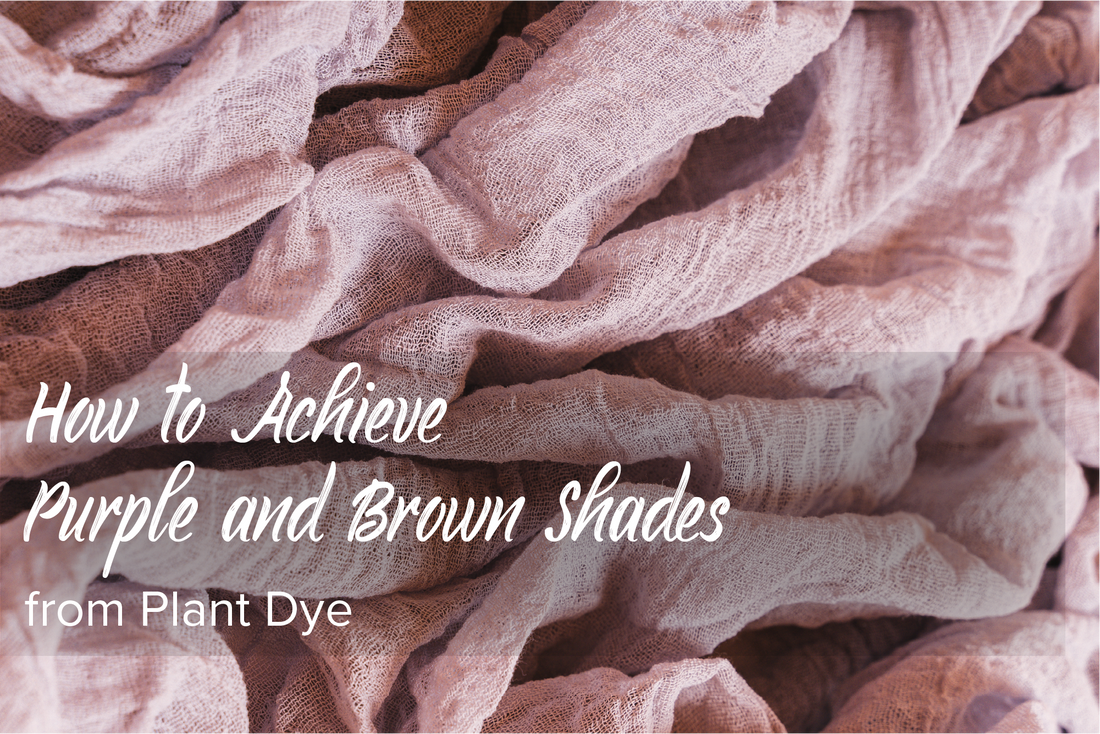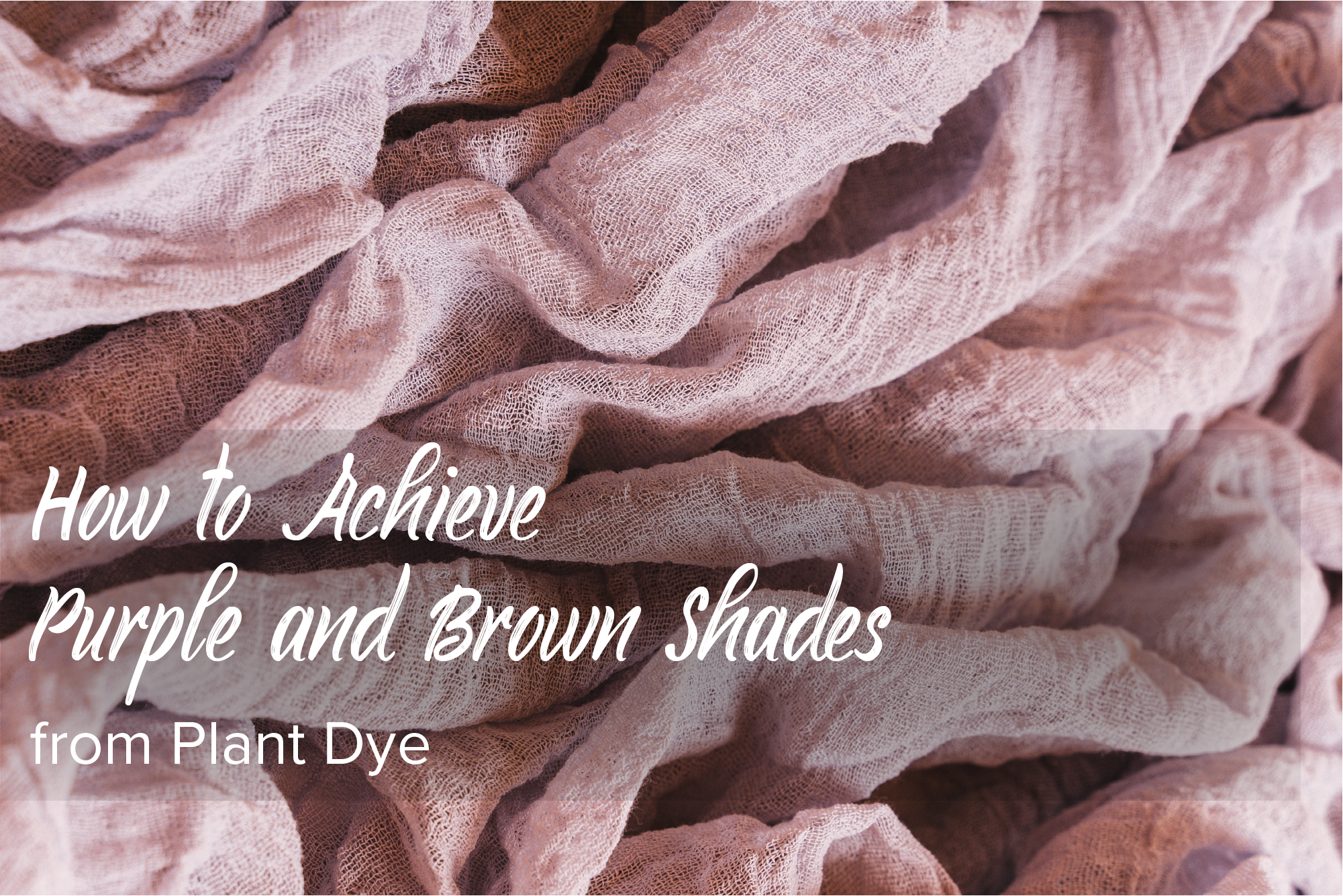
How to Achieve Purple and Brown Shades from Plant Dye?
 There are so many natural and beautiful colors that we can achieve with plant dyes. With the right knowledge and technique, we can make mesmerizing colors. Today we will explore what plant dye is providing purple and brown pigments and how to achieve the desired color.
There are so many natural and beautiful colors that we can achieve with plant dyes. With the right knowledge and technique, we can make mesmerizing colors. Today we will explore what plant dye is providing purple and brown pigments and how to achieve the desired color.
Acorn Extract

The acorn is the fruit of varieties of oak trees (quercus species). Oak is native to the northern hemisphere, and over 500 varieties exist. Acorn tannin has good wash and light-fastness. It can be used as a dyestuff for purple and ginger brown colours, or as a tannin in a mordanting process.
Acorn extract is a very beginner friendly dye because even without the addition of mordants you can achieve beautiful colors. If you are considering taking up dying fabrics with plant dyes as your new hobby or DIY project, we recommend starting out with acorn extract.
How to use dried acorn extract /acorn tannin powder:
Ensure your fiber/fabric has been properly scoured before use.
To dye fabric/fiber: Use at least 20g acorn extract powder to dye approximately 100g of fiber. Acorn extract powder is suitable for cold, hot and all-in-one dyebath techniques. To make an all-in-one dyebath, pour boiling water over the powder. Allow the mixture to cool overnight. The next day, bring the dyebath to a gentle simmer, add the fabric/fiber and simmer gently for an hour. Leave for several hours or overnight, stirring occasionally.
The longer the fabric stays in the mixture the deeper and more intensive the color will get, therefore check the color frequently to make sure that you don’t “overdye” it.
Charcoal grey and darker brown shades can be obtained with the use of iron sulphate.
To use as a tannin in a tannin/aluminium mordanting process: Use 10g acorn extract powder for 100g of fiber. Pour boiling water over the powder. Allow the mixture to cool overnight. The next day, bring the tannin bath to a gentle simmer, add the fabric/fiber and more hot water if necessary to cover the fabric/fiber. Leave for several hours or overnight, stirring occasionally. Follow this with the use of an aluminium mordant, and a second tannin soak, if desired.
Madder Root Powder
Ensure your fibre/fabric has been properly scoured before use. Depending on the effects required, different mordants may be used.
For mauve and purple colours, fibres can be mordanted first with iron sulphate.
Use 100g madder powder to dye approximately 100g of fibre, for strong tones. Place the powder into a pan and cover with hot water from the tap/faucet, enough to ensure your fabric/fibre can be moved around easily for even uptake of the dye. Bring the dyebath to 60-70 degrees Celsius (140-160F) and maintain at this temperature for an hour. Add your wet/damp fibres and keep the dyebath at 60-70 degrees Celsius for a further hour. If you allow the temperature to get too high, you will get browner/duller colours. Allow the dyebath to cool for several hours or overnight, stirring occasionally. If the desired shades have not been reached, you can reheat and cool again.
A second use of the dyebath can often be made, which will result in paler shades than the first dyebath. Simply reheat the bath and add more fibres/fabrics. You may even find you can do a third batch.